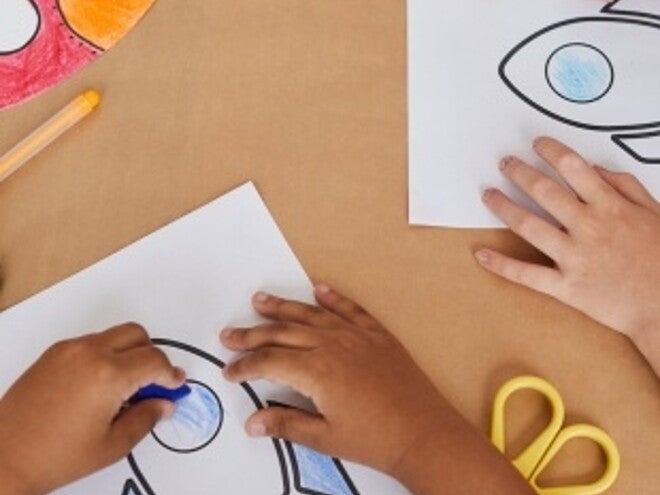
Developing Hand Skills
However, in spite of this complexity, pre-schoolers typically make significant progress in developing their hand skills between their third and sixth birthdays.
The development of hand skills requires daily practice.
By the time they enter primary school, children need to be able to grasp, handle and manipulate various objects in a variety of ways, without paying conscious attention to their hand movements. They develop these skills during the pre-school years as they play with everyday objects and toys, experiment with play dough, use construction blocks, practise scissor cutting skills and begin to use crayons and pencils in creative activities.
These activities seem ordinary at first glance, but they are priceless and necessary for children of this age-group to develop control of the fine muscles in their palms and fingers, while developing muscle memory and various types of coordination.
The development of hand skills goes hand in hand with learning to process tactile information.
Whenever children use their hands, their developing brains are challenged to process tactile information that tells them whether an object is hard or soft, cold or warm or perhaps made of a specific type of material.
What’s more, children also need to practise identifying the unique shape of objects that they use regularly so that they can eventually learn to work and play without having to look at whatever they are handling.
Both hands also need to learn to work together.
This requires specialised brain wiring as it requires the two halves of the brain to “talk to each other”. It is therefore quite amazing to witness pre-schoolers progress from month to month as they practise and perfect skills such as learning to use buttons to dress and undress themselves, thread beads onto a lace, manipulate play dough and rhythmically use their dominant hand to open and close a pair of scissors whilst steering a piece of paper with their supporting hand.
Certain hand skills require learning to use one or both hands independently.
The fingers, thumb and muscles of the palm of each hand need to coordinate to enable children to move small objects around within one hand. This skill, called in-hand manipulation, is developed by doing a variety of actions including screwing lids onto bottles and manipulating tools such as scissors, keys, buttons and shoelaces.
Children develop most of their hand function through play.
Little hands get a daily workout when children play in conventional ways, as opposed to watching television or playing computer games, since active play typically involves using their hands to handle and manipulate objects.
In addition to this, play also provides the ideal opportunity to develop the intricate interdependency that exists between a child’s sensory and motor systems. In other words, conventional play provides a platform from which children can learn to simultaneously use their senses, their minds, their bodies and their hands in perfect unison.
We’re here to support you as you build strong foundations for your child’s development.
There are a number of interesting, fun and engaging games that parents can play at home to help 3- to 5-year-olds develop hand skills in age-appropriate ways.
If your child is 3 to 5 years old, we invite you to sign up – at no charge – to receive developmental milestone reminders and information, aimed at supporting children’s development in all domains, monthly.
Sign up here to start benefiting from the NESTLÉ® NANKID® 4 milestone reminder tool. You will receive monthly developmental milestone reminders of your little one up until their sixth birthday
We are also adding a downloadable educational activity as an extra bonus.
Please follow this link to download your activity.
NESTLÉ® NANKID® 4 is a premium drink for growing children. It provides a unique combination of high-quality ingredients.
There are 4 major reasons to choose NESTLÉ® NANKID® 4 for 3 to 5-year-olds.
- It contains HMO.
- It contains OPTIPRO® (source of protein), the right quality and quantity of proteins.
- It is a source of Omega-3 (with DHA*), and Omega-6.
- It contains BIFIDUS (a naturally active culture).
*DHA: Docosahexaenoic Acid
IMPORTANT NOTICE: NESTLÉ® NANKID® 4 is not a breastmilk substitute and is formulated to meet the changing nutrition needs of healthy children older than 3 years.